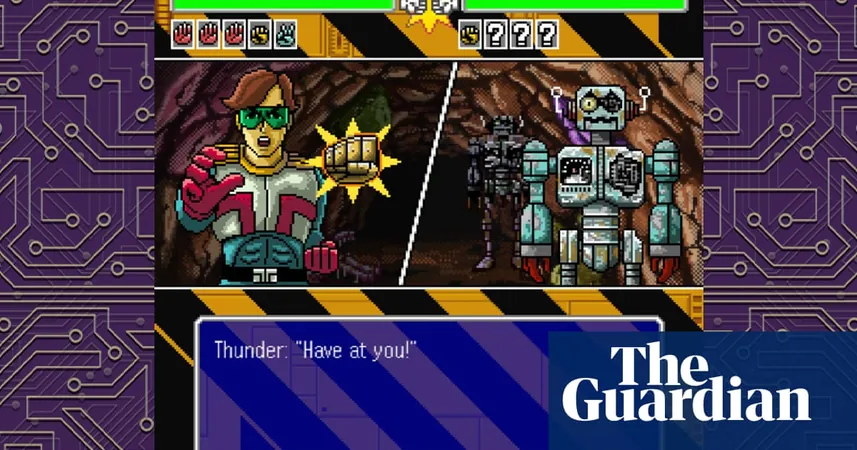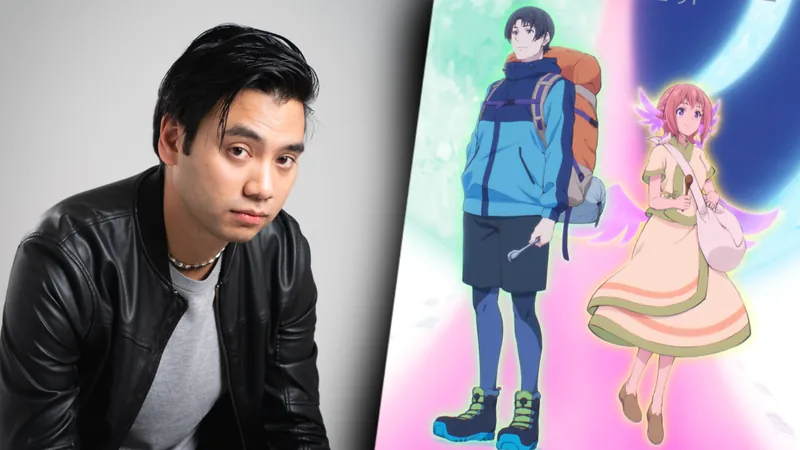
From Hanafuda to Hero: How Takaya Imamura Shaped Nintendo's Legacy
2025-01-20
Author: Jacob
In the heart of Kyoto, 1889, a craftsman named Fusajiro Yamauchi took a leap of faith and founded a hanafuda playing card company known as Nintendo, a term whose precise meaning has faded over the years but is often interpreted as “leave luck up to heaven.” Little did he know, this small venture would transform into a global powerhouse in the gaming industry, captivating audiences around the world with innovative electronic entertainment.
Fast forward to the 1980s, where a young Takaya Imamura found inspiration in groundbreaking titles like Metroid and Super Mario Bros 3. “When Super Mario was unleashed in Japan in 1985, it took over everyone’s life,” Imamura recalls. Enrolled in an art university, he initially thought that to work in video game development, the path required a solid foundation in science rather than art. However, everything changed when he learned that Shigeru Miyamoto, the brilliant mind behind Super Mario, was a designer, not a programmer. This revelation ignited a fire in Imamura to pursue his dream of joining Nintendo.
After a successful interview at both Konami and Nintendo, Imamura’s decision was bolstered by his mother's advice to choose the company with a century-long legacy. Thus, in 1989, at the age of 22, he became part of Nintendo during a landmark year celebrating its 100th anniversary. Excited yet apprehensive, Imamura's eyes lit up as he entered the development building and encountered something akin to a secret world filled with monitors displaying games in the making.
Assigned to Miyamoto’s team, Imamura couldn't contain his excitement, saying, “Inside, I was doing the Mario jump!” This enthusiasm marked the start of an incredible 32-year journey that would see Imamura become a pivotal figure in shaping some of Nintendo's most iconic franchises.
His first major project was the adrenaline-pumping F-Zero, for which Imamura crafted the backstory and designed the fast-paced racing game's unforgettable character, Captain Falcon. By fusing western comic style influences with his imaginative touch, he gave F-Zero a unique flavor that resonated with audiences globally. “No one asked me to create these characters, but I felt there should be a world behind the game,” he reflects, adding an emotional undertone to his contributions.
The 90s saw him expand his portfolio by working on the beloved The Legend of Zelda: A Link to the Past, where his talent helped define its visual identity with the iconic logo and the expansive, mystical world of Hyrule. This led him to Star Fox, a project that took an unexpected turn when Miyamoto suggested making anthropomorphic animals the protagonists instead of traditional aliens. Imamura enthusiastically embraced the idea, leading to the birth of Fox McCloud and his diverse companions inspired by Japanese folklore.
Later, Imamura became the art director for Majora’s Mask, a darker turn for the Zelda series, showcasing his capability to not only create light-hearted characters but also to evoke unsettling emotions in players. “I was lucky to be a part of such a transformative time,” he contemplates, acknowledging the rapid evolution of gaming technology and design during those years.
As Nintendo adapted under the leadership of Satoru Iwata, who took president in 2002, the company’s direction took a strategic pivot toward inclusive gaming. Iwata's vision of broadening gaming's audience led to the monumental success of the DS and Wii consoles, bringing gaming into the lives of millions who had never engaged with video games before. Imamura credits Iwata’s analytical approach for the groundbreaking successes, shifting from Yamauchi's more instinctive management style.
Despite the glory days, Imamura faced challenges as the industry progressed. After creating a range of downloadable games for the 3DS, he decided to leave Nintendo in 2021 to follow his own creative path. His newfound independence led to a poignant project: a playable adaptation of his early manga, Omega Six. Set to launch next month, it captures his longstanding vision and embraces the classic aesthetic of 16-bit games while bringing a sense of nostalgia to gaming enthusiasts.
"I always believed in pouring my heart into each project. Luck, as Yamauchi said, plays its part afterward," Imamura reflects, proud of the legacy he created at Nintendo. Now, as he brings Omega Six to life, he carries the essence of Nintendo's spirit with him, proving that sometimes, the leap of faith – much like Yamauchi's – can lead to extraordinary adventures.









 Brasil (PT)
Brasil (PT)
 Canada (EN)
Canada (EN)
 Chile (ES)
Chile (ES)
 Česko (CS)
Česko (CS)
 대한민국 (KO)
대한민국 (KO)
 España (ES)
España (ES)
 France (FR)
France (FR)
 Hong Kong (EN)
Hong Kong (EN)
 Italia (IT)
Italia (IT)
 日本 (JA)
日本 (JA)
 Magyarország (HU)
Magyarország (HU)
 Norge (NO)
Norge (NO)
 Polska (PL)
Polska (PL)
 Schweiz (DE)
Schweiz (DE)
 Singapore (EN)
Singapore (EN)
 Sverige (SV)
Sverige (SV)
 Suomi (FI)
Suomi (FI)
 Türkiye (TR)
Türkiye (TR)
 الإمارات العربية المتحدة (AR)
الإمارات العربية المتحدة (AR)